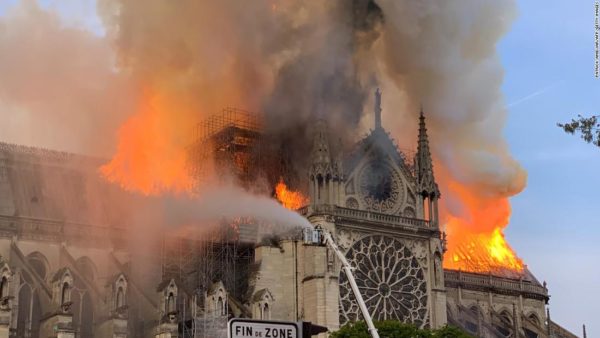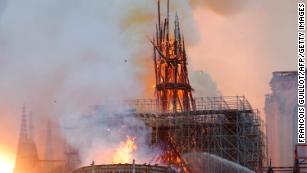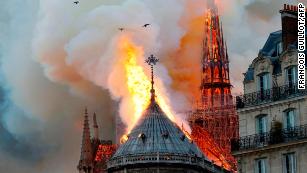In fact, Notre Dame was built on land where a
pagan temple was situated in Roman times. But the cathedral in its current form may be more directly traced to the
rule of Louis VII, who, in an effort to cement Paris as the true capital of Europe, began work with the blessing of Pope Alexander III on the towering structure that continues to dominate the Paris skyline today. It took at least a century to complete it, but new touches were constantly added for the next half a millennium.
In the 18th century, the French Revolution was hardly kind to a magnificent reminder of the glory of the French kings, and more than 28 statues in Notre Dame
were beheaded by the mobs. The leaders of the revolution rededicated the structure to the Cult of Reason, then the Cult of the Supreme Being — still keeping the structure intact, as well as its relation to a god that many questioned. Finally, Napoleon returned the cathedral to the Catholic Church, setting his coronation as emperor inside its magnificent walls.
While France is nearly two-thirds Catholic, the Notre Dame blaze remains significant for the country’s entire population — since the cathedral has long served as a central symbol of both French history and culture. And it is for this reason that those grieving can and should take comfort in Macron’s pledge to rebuild the cathedral: “This is probably part of the French destiny. And we will do it in the next years.”
 No single catastrophic event has bit so deeply into the core of the cathedral and its soaring spire as Monday’s fire that lit up the city skyline. As thousands lined the banks of the Seine to gaze up at the flames, there were few words to convey their fear that a central part of the French national identity and eight centuries of its precious history had been lost in a single transcendent moment.
No single catastrophic event has bit so deeply into the core of the cathedral and its soaring spire as Monday’s fire that lit up the city skyline. As thousands lined the banks of the Seine to gaze up at the flames, there were few words to convey their fear that a central part of the French national identity and eight centuries of its precious history had been lost in a single transcendent moment.

Leave a Reply
You must be logged in to post a comment.